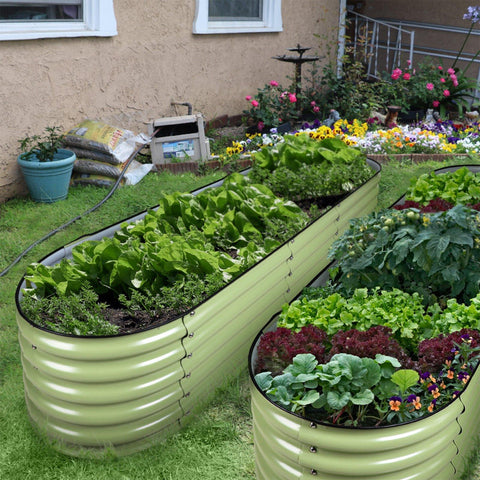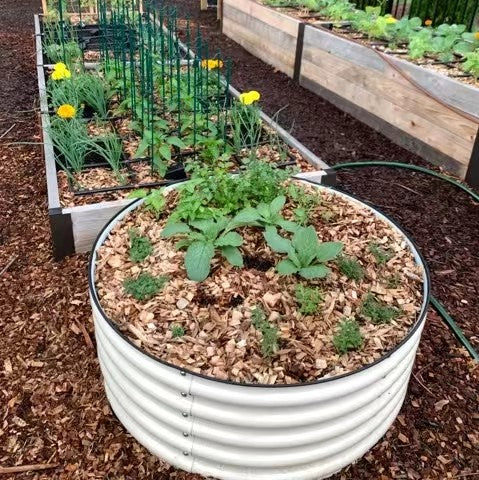Vertical Gardening in Ollie Garden Raised Beds: Growing Up for Greenery
The growing trend of vertical gardening has made it possible to maximize the amount of greenery in small spaces. Raised beds and vertical gardening work well together to create a vibrant space-saving sanctuary in your backyard. The world of vertical gardening in raised beds will be explored in this blog post, along with its benefits, design considerations, and how to get started on your own green-filled trip.
Why Vertical Gardening in Raised Beds?
- Space Efficiency: In urban environments and smaller yards, space is often at a premium. Vertical gardening in raised beds allows you to make the most of your available space by utilizing both horizontal and vertical dimensions.
- Accessibility: Raised beds bring plants closer to eye level, making it easier to care for them. This is especially beneficial for those with mobility issues or back problems.
- Improved Drainage: Raised beds offer better drainage than traditional in-ground gardens, preventing waterlogged roots and promoting healthier plant growth.
- Aesthetic Appeal: Vertical gardens in raised beds are visually striking. They create an eye-catching focal point in your garden while adding texture, color, and depth.

Designing Your Vertical Raised Bed Garden
When planning your vertical raised bed garden, consider these key elements:
- Plant Selection: Choose plants that thrive vertically. Vining plants like tomatoes, cucumbers, and beans are excellent choices. Ornamental climbers like clematis and ivy can also add beauty to your garden.
- Support Structures: Install trellises, stakes, or vertical gardening kits to provide support for your climbing plants. Make sure they are sturdy and properly anchored to withstand wind and plant weight.
- Spacing: Plan your vertical garden's layout to ensure that each plant has adequate space and access to sunlight. Overcrowding can lead to competition for resources and reduced yields.
- Soil Preparation: Fill your raised beds with well-draining, nutrient-rich soil. Raised beds tend to warm up faster in the spring, which can extend your growing season.
- Watering System: Consider installing a drip irrigation system or soaker hoses to ensure your vertical garden receives consistent moisture.

Plant Choices for Your Vertical Garden
- Tomatoes: Vertical gardening is ideal for growing tomatoes, allowing them to climb and produce more fruit.
- Cucumbers: Cucumbers thrive when allowed to climb vertically, saving space and reducing the risk of disease.
- Beans: Pole beans are designed for vertical growth and can provide a bountiful harvest.
- Herbs: Herbs like basil, thyme, and mint can be grown vertically, enhancing your culinary endeavors.
- Flowering Vines: Clematis, morning glories, and climbing roses add beauty and fragrance to your garden.

Advantages of Vertical Raised Bed Gardening
- Maximized Space: Vertical gardens enable you to grow more plants in a smaller footprint.
- Better Pest Control: Elevating plants can help deter ground-dwelling pests and reduce the risk of soil-borne diseases.
- Easier Harvesting: Picking fruits and vegetables from vertical gardens is more convenient and less physically demanding.
- Improved Air Circulation: Vertical growth allows for better air circulation around plants, reducing the risk of fungal diseases.
Vertical gardening in raised beds is a creative and practical way to make the most of your gardening space while enjoying the numerous benefits it offers. Whether you have a compact backyard or just want to add a unique and visually appealing element to your garden, growing up for greenery is an excellent choice. By carefully selecting plants, providing proper support, and nurturing your vertical garden, you'll be rewarded with a bountiful and beautiful space that takes your gardening experience to new heights. Happy gardening!
